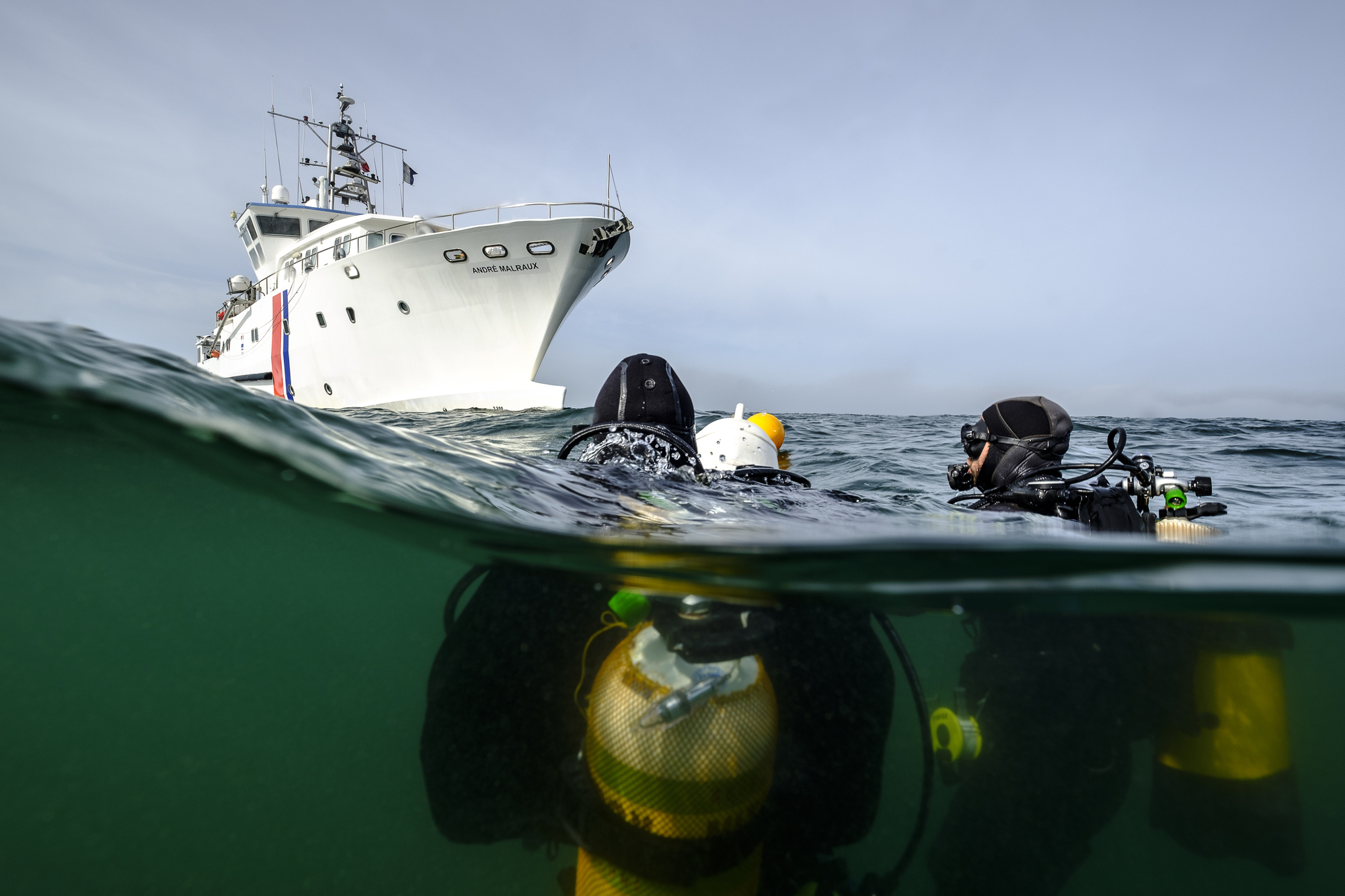
- Home
- A systematic inventory (2015-2019)
- A heritage-based initiative
Beginning in 2015, the DRASSM coordinated an inventory of D-Day wrecks that was primarily driven by cultural heritage concerns.
A request from the Normandy Region
Since 2008, the Lower Normandy Region, today the Normandy Region, has been leading a collaborative effort to have “The Landing Beaches, Normandy 1944” included on the UNESCO World Heritage list. This nomination is based on the concept of a cultural landscape that progressively integrates, in addition to the beaches themselves, traces of the conflict on the landscape, terrestrial and maritime remains, as well as the more intangible aspects.
In mid-2014, the Normandy Region contacted the DRASSM requesting a complete inventory of the underwater remains of the Normandy landings. In order to represent all of the landing operations, and not just those of D-Day, this inventory, presented on this website, covers the period between June and November 1944. For reasons of geographical relevance, only remains preserved off the Normandy landing beaches have been taken into account. Thus, vessels that took part in Operation Neptune, but were either lost after November 1944 or in another geographical area, are not included in the inventory. This is the case for the liner Léopoldville, requisitioned as a troop transport and torpedoed 24 December 1944 off Cherbourg.
2015: Establishing a pre-inventory
The first phase of the work coordinated by the DRASSM was compiling a pre-inventory of sites based on the accumulated data recorded by previous teams since the 2000s. This process, conducted in 2015 by Django Guyon (ADRAMAR – Association for the Development of Maritime Archaeological Research), involved reviewing all relevant reports, books and articles, as well as the geophysical data from previous research campaigns.
This synthesis revealed inconsistencies in documentation from the various operations and showed that at least half of the 125 pre-inventoried sites required further study. Certain sites were incorrectly located, the state of conservation of others was unclear, the descriptions of some remains were incomplete and their identification sometimes uncertain. It was therefore essential to deepen our knowledge of these sites to produce an accurate and exhaustive inventory for consideration in the UNESCO World Heritage nomination process.


